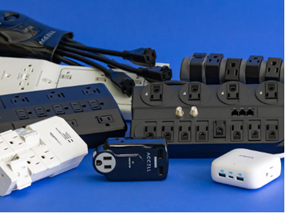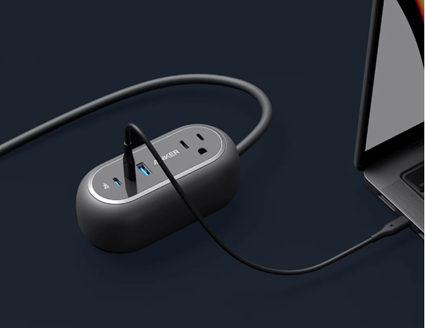In
today's tech-driven world, protecting electronic devices from power surges is
essential. Surge protectors safeguard your valuable gadgets from unexpected
voltage spikes, ensuring their longevity and reliability. However, not all
surge protectors are created equal. Different types are designed to meet
various needs and environments. Here, we'll explore the different types of
power surge protectors and their specific applications.

Different Types of Power Surge Protectors
Learning
the various types of surge protectors available can help you choose the best
one for your needs. Here, we'll discuss the most common types and their unique
features.
Basic Power Strip Surge Protectors
Basic
power strip surge protectors are the most common and affordable option. These
devices combine multiple electrical outlets with built-in surge protection.
They are ideal for home and office use, providing a convenient way to power and
protect multiple devices like computers, monitors, and peripherals. However,
it’s better to look for certified power surge protectors with a high rating and
multiple outlets from USB ports to AC ports to accommodate all your devices.

Wall-Mounted Surge Protectors
Wall-mounted
surge protectors plug directly into an electrical outlet and typically offer a
few additional outlets. These are perfect for areas with limited space or where
you want to keep your setup neat and tidy, such as kitchens or small offices.
Some models also include USB ports for charging mobile devices. The compact
design makes them an excellent choice for protecting devices without cluttering
your space.
Rack-Mount Surge Protectors
Rack-mount
surge protectors are designed for use in server rooms and data centers. These
protectors can be mounted on server racks, providing surge protection for
multiple servers, networking equipment, and other critical infrastructure. They
often come with advanced features like network management and monitoring
capabilities, allowing IT professionals to manage power distribution and
protection effectively.
Whole-House Surge Protectors
Whole-house
surge protectors are installed at the main electrical panel of a home or
building. These devices provide comprehensive protection for all electrical
appliances and devices within the property. They are ideal for safeguarding
against external surges, such as those caused by lightning strikes. Installing
a whole-house surge protector ensures that all connected devices, from HVAC
systems to kitchen appliances, are protected from power surges.
Portable Surge Protectors
Portable
surge protectors are designed for travelers and people on the go. These compact
devices provide surge protection for laptops, smartphones, and other portable
electronics. They are perfect for use in hotels, airports, and remote work
locations. Some portable models come with additional features like USB ports
and international plug adapters, making them versatile and convenient for
frequent travelers.
Coaxial and Ethernet Surge Protectors
Coaxial
and Ethernet surge protectors are specialized devices designed to protect
specific types of cables. Coaxial surge protectors safeguard cable TV and
satellite systems, while Ethernet surge protectors protect network devices from
surges that can travel through data cables. These protectors are crucial for
maintaining the integrity of communication and data networks and preventing
damage to modems, routers, and other network equipment.
Conclusion
So
here are the common types of power surge protectors we may use in life.
Choosing the right type of power surge protector depends on your specific needs and environment. From basic
power strip surge protectors to whole-house systems and specialized coaxial
protectors, each type offers unique benefits tailored to different
applications. So evaluate your needs and select the surge protector that best
fits your lifestyle and setup to ensure the longevity and reliability of your
electronic devices, providing peace of mind and safeguarding against unexpected
voltage spikes.
